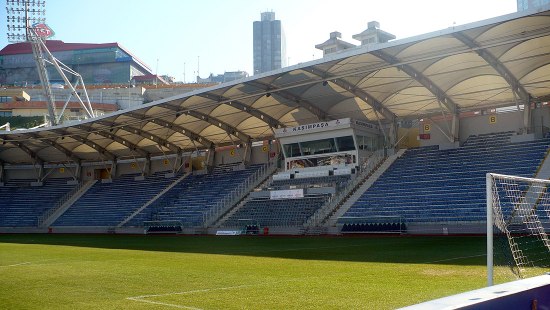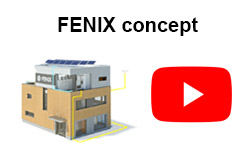Heating of the playing field at the Kasimpasa football stadium – Istanbul (Turkey)

In July 2010 our Turkish partner, the company YS Mimarlik, installed heating for the playing field at the Kasimpasa premier league football club’s stadium in Istanbul. The new grass surface with electric heating is part of a complete reconstruction of this stadium. ECOFLOOR MAPSV type heating cables with a wattage of 15W/m were used.
A total of 185 heating circuits with a wattage of 3550W and a length of 220m were installed. The heating cables are laid in a sand bed 20 cm below the surface of the turf. The spacing between the individual loops of cable is 19 cm. The installed wattage is 674 kW and the wattage per square metre is approximately 85 W/m².
The orientation of the cables with regards to the exposure of the heated surface to the sun is also important (the shadow of the grandstand lies parallel to the cables). The heating cables are gathered together in a supply channel, where they are connected to the power cables.
A very important component of the whole heating system is the power supply switchboards with regulation, this equipment being produced by YS Mimarlik. The system is divided into 4 main sections and 36 subsidiary ones. The temperature of the playing surface is monitored by 16 sensors placed 15 cm under the surface of the pitch.
Very good software for the monitoring and administration of the whole system was also developed by the above-mentioned company, YS Mimarlik. It is capable of remotely monitoring the heating process by itself. The electric heating system is almost completely automated; the regulation looks after everything. The individual sections can also be manually controlled via remote control using the software.
The temperature of the turf (by the roots) is maintained at 10-15°C, which also ensures that the grass grows even throughout the winter season. However, the heating primarily ensures that the playing field isn’t frozen and slippery, which enables players to move around the pitch more easily. This is what the heated pitch looks like in February when the night temperatures are below freezing point (the temperature of the turf playing surface was 15°C).
This, however, is an unheated area of grass behind one of the goals (its temperature was only 2°C). An overall view of the playing field (the unheated lawn behind the goal is on the right). A difference is visible not only in the appearance of the lawn but particularly in the hardness of the surface.











